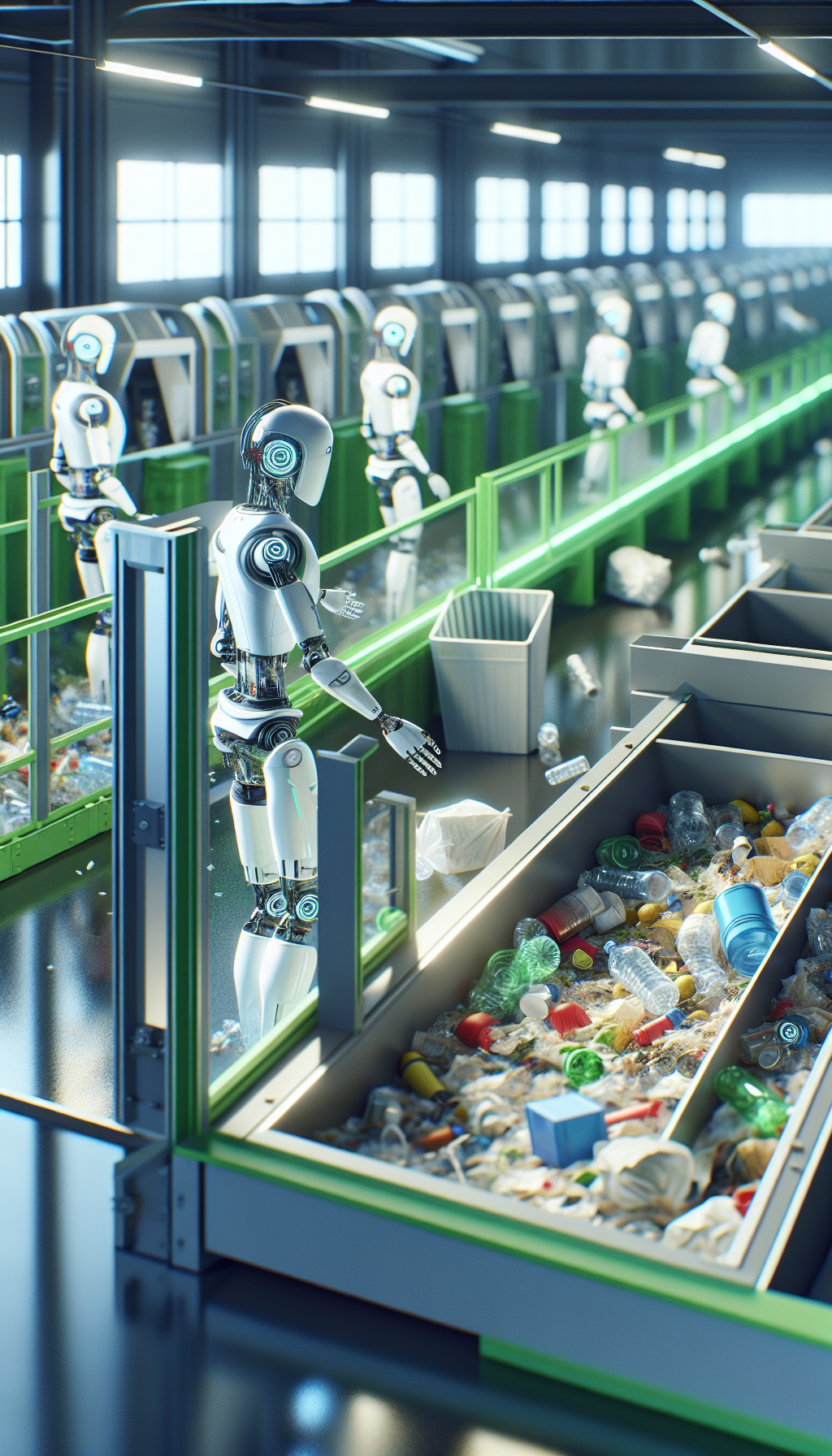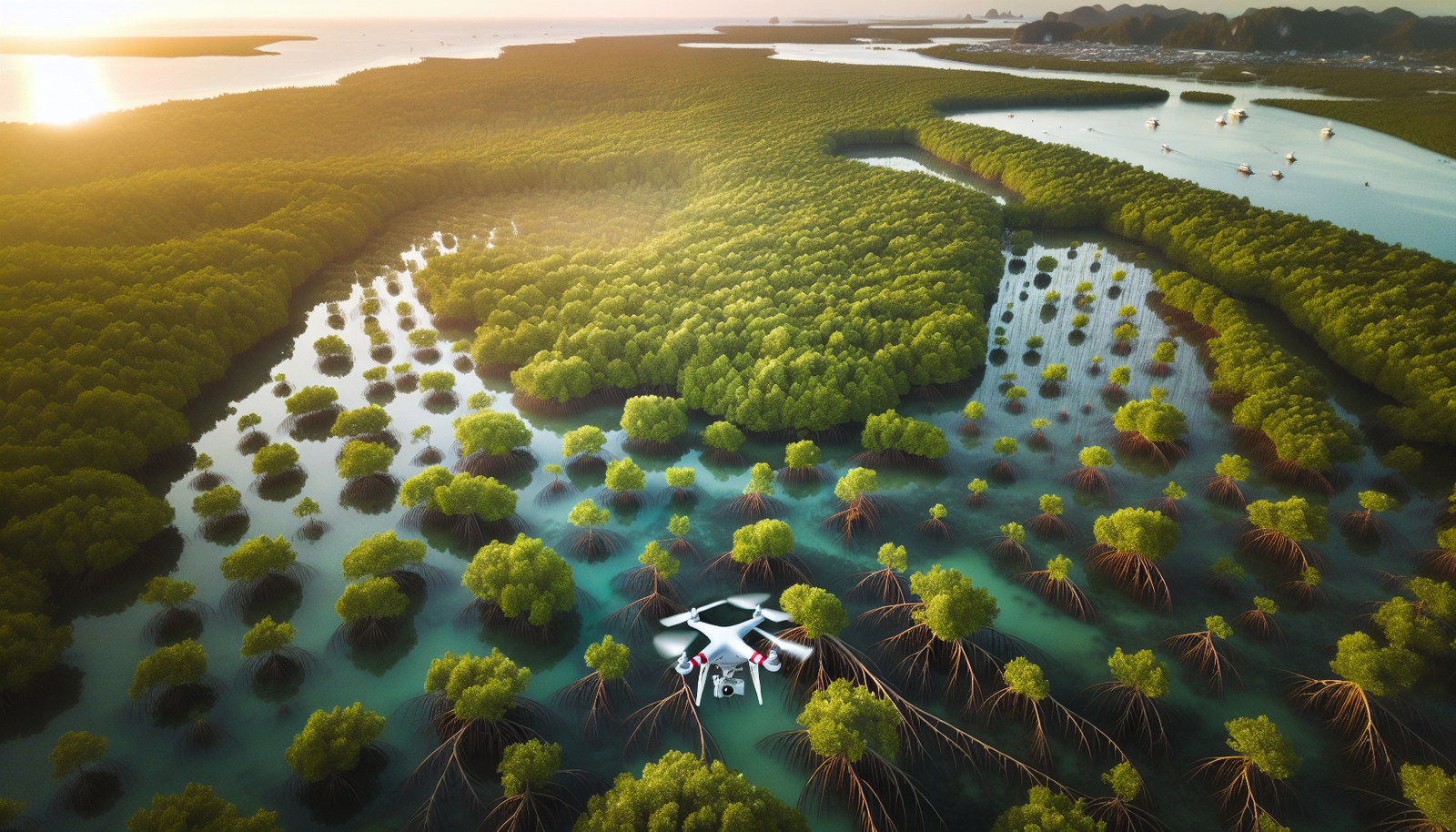Understanding the Circular Economy
The concept of the circular economy is gaining traction as an innovative approach to sustainability. Unlike the traditional linear economy, which follows a ‘take, make, dispose’ model, the circular economy emphasizes the continuous use of resources. This model aims to minimize waste, make the most of available resources, and reduce environmental impact. At its core, the circular economy is about closing the loop of product lifecycles through greater resource efficiency.
Key Principles of the Circular Economy:
- Design Out Waste: Products are designed and optimized for a cycle of disassembly and reuse, minimizing the use of raw materials.
- Build Resilience Through Diversity: Diverse systems are less likely to fail and can better adapt to changing conditions.
- Use Energy from Renewable Sources: Transitioning to renewable energy sources is crucial for reducing the carbon footprint of production processes.
- Think in Systems: Understanding how different parts of the system interact can lead to more effective solutions for sustainability challenges.
The transition to a circular economy requires systemic change, which involves not only altering production processes but also transforming the way consumers think about ownership and waste. Businesses are encouraged to shift from selling products to providing services, such as leasing or sharing models, which align with circular principles. This transformation is supported by various stakeholders, including governments, industries, and consumers, all playing an active role in fostering a sustainable future.
Data visualization can greatly enhance our understanding of the circular economy’s impact. For instance, a comparison table can illustrate the differences between linear and circular economic models:
| Aspect | Linear Economy | Circular Economy |
|---|---|---|
| Resource Use | Finite resources, high consumption | Renewable, optimized use |
| Waste Management | Significant waste generation | Minimized waste, recycling, and reuse |
| Production Model | Mass production, short lifecycles | Durable products, long lifecycles |
The Role of AI in Waste Management
Artificial Intelligence (AI) is playing a pivotal role in transforming waste management systems across the globe. By leveraging advanced algorithms and machine learning techniques, AI is enhancing the efficiency of waste sorting and recycling processes. This not only reduces the burden on landfills but also recovers valuable materials that can be reintroduced into the production cycle. As a result, AI-powered waste management solutions contribute to the creation of a more sustainable and resource-efficient circular economy.
Improved Sorting Mechanisms are one of the most significant contributions of AI to waste management. Traditional sorting methods often rely on manual labor, which can be time-consuming and error-prone. AI technologies, such as computer vision and robotics, are being utilized to automate sorting lines in recycling facilities. These systems can accurately identify and separate different types of waste materials, such as plastics, metals, and paper, with remarkable precision. This not only boosts the recycling rate but also ensures that the quality of recycled materials remains high.
Additionally, AI is being used to optimize waste collection routes, thereby reducing fuel consumption and emissions. By analyzing data on waste generation patterns and traffic conditions, AI can generate the most efficient routes for waste collection vehicles. This optimization not only saves operational costs but also minimizes the environmental impact of waste collection activities. Moreover, AI can predict waste generation trends, enabling municipalities and waste management companies to plan and allocate resources more effectively.
To further illustrate the impact of AI in waste management, consider the following data:
| AI Application | Benefit |
|---|---|
| Automated Sorting | Increases recycling efficiency by up to 30% |
| Route Optimization | Reduces fuel consumption by 15-20% |
| Predictive Analysis | Improves resource allocation and reduces waste overflow incidents |
Enhancing Resource Efficiency with AI
Artificial Intelligence (AI) is playing a pivotal role in enhancing resource efficiency within the circular economy framework. By leveraging advanced algorithms and machine learning techniques, AI enables businesses to optimize the use of raw materials, minimize waste, and reduce environmental impact. One significant area where AI is making a substantial difference is in predictive maintenance. AI systems can analyze data from machinery and equipment to predict failures before they occur, thereby reducing downtime and extending the lifespan of industrial assets.
AI-driven solutions are also transforming supply chain management by providing real-time analytics and insights. Companies can utilize AI to monitor inventory levels, forecast demand, and streamline logistics operations. This not only enhances operational efficiency but also helps in reducing excess production and overstocking, which are critical factors in minimizing waste. Furthermore, AI can assist in designing smarter products that are easier to recycle and reuse, thus supporting the core principles of a circular economy.
In the realm of waste management, AI technologies are revolutionizing sorting and recycling processes. Advanced image recognition and sorting systems powered by AI can accurately identify and categorize different types of waste materials, enhancing recycling rates. The following table illustrates how AI improves sorting accuracy compared to traditional methods:
| Sorting Method | Accuracy Rate |
|---|---|
| Traditional Manual Sorting | 70% |
| AI-Powered Sorting | 95% |
Moreover, AI is driving innovation in developing new materials that are more sustainable and easier to recycle. By analyzing vast datasets, AI can identify patterns and properties that lead to the creation of environmentally friendly alternatives to conventional materials. This advancement is crucial in fostering a circular economy where materials are continuously repurposed, reducing the need for virgin resources.
AI Innovations in Recycling Processes
Artificial Intelligence (AI) is playing a pivotal role in transforming recycling processes, making them more efficient and effective. By leveraging machine learning algorithms and data analytics, AI systems can significantly enhance the sorting and processing phases of recycling. These systems are capable of identifying materials with greater accuracy than traditional methods, thus reducing contamination rates and improving the quality of recycled products.
AI-powered robots equipped with computer vision are now able to sort waste materials at a much faster rate than human workers. These robots use advanced sensors and cameras to detect different types of materials on conveyor belts. By utilizing deep learning models, these systems can distinguish between various materials such as plastics, metals, and glass, leading to higher purity levels in sorted recyclables. This not only increases the efficiency of recycling facilities but also reduces the reliance on manual labor, thus lowering operational costs.
In addition to sorting, AI is also being used to optimize the logistics of waste collection and processing. By analyzing data from various sources, AI can predict waste generation patterns and optimize collection routes, minimizing fuel consumption and reducing carbon emissions. This approach not only contributes to environmental sustainability but also enhances the overall efficiency of recycling operations.
| AI Application | Impact on Recycling |
|---|---|
| Robotic Sorting | Increases sorting speed and accuracy, reduces contamination rates. |
| Logistics Optimization | Minimizes fuel consumption and emissions, improves collection efficiency. |
| Material Identification | Enhances material purity, reduces reliance on manual sorting. |
Reducing E-Waste with AI Technologies
The proliferation of electronic devices has led to a significant increase in electronic waste (e-waste), posing environmental and health challenges globally. AI technologies are at the forefront of addressing these challenges by revolutionizing how e-waste is managed. Through intelligent sorting systems, AI enhances the efficiency of identifying and categorizing e-waste components, ensuring that valuable materials are reclaimed and hazardous substances are safely disposed of. This not only reduces the volume of e-waste but also supports the creation of a more sustainable environment.
AI-driven predictive analytics play a crucial role in reducing e-waste by predicting product lifecycles and optimizing resource utilization. By analyzing data patterns, AI can forecast when electronic devices are likely to become obsolete, enabling manufacturers and consumers to make informed decisions about recycling and repurposing. This proactive approach helps in minimizing waste and extending the lifespan of electronic products, thereby contributing to a reduction in e-waste generation.
In addition to predictive analytics, machine learning algorithms are employed to improve the recycling processes of e-waste. These algorithms can identify and separate materials with precision, increasing the recovery rates of precious metals such as gold, silver, and palladium from electronic scrap. The following table illustrates the effectiveness of AI-enhanced recycling efforts:
| Material | Traditional Recovery Rate (%) | AI-Enhanced Recovery Rate (%) |
|---|---|---|
| Gold | 50 | 90 |
| Silver | 60 | 85 |
| Palladium | 40 | 80 |
Moreover, AI technologies foster the development of sustainable business models that prioritize the refurbishment and resale of electronic devices. By utilizing AI to assess the condition and functionality of used electronics, businesses can identify items suitable for refurbishment, thereby reducing waste and promoting a circular economy. These AI-powered initiatives not only mitigate the environmental impact of e-waste but also create economic opportunities through new markets for refurbished products.
AI in Sustainable Supply Chain Management
The integration of AI into supply chain management is a transformative force driving sustainability. AI technologies, such as machine learning and predictive analytics, are being utilized to optimize various components of the supply chain, thereby reducing waste and improving efficiency. By analyzing large datasets, AI can identify patterns and predict demand more accurately, which helps in minimizing overproduction and excess inventory. This, in turn, reduces the waste generated from unsold products, contributing to a more sustainable supply chain.
One of the key areas where AI is making a significant impact is in logistics and transportation. AI-powered systems can optimize delivery routes, reducing fuel consumption and emissions. For example, predictive analytics can forecast potential delays or disruptions, allowing companies to make proactive adjustments. This not only ensures timely deliveries but also minimizes the carbon footprint associated with transportation. Furthermore, AI can enhance transparency in the supply chain, offering real-time tracking and monitoring, which is crucial for maintaining sustainability standards.
The implementation of AI in inventory management is another critical aspect of sustainable supply chain management. AI algorithms can accurately forecast inventory requirements, enabling businesses to maintain optimal stock levels and reduce waste. By utilizing historical sales data and market trends, AI systems can predict which products are likely to sell, thus preventing overstocking and the subsequent disposal of unsold goods. This predictive capability helps businesses align their production closely with actual demand, promoting a circular economy.
Additionally, AI facilitates better collaboration and communication among supply chain partners. By providing a unified platform for sharing information, AI enables companies to align their sustainability goals and strategies more effectively. This collaboration is essential for implementing circular economy practices, such as product life extension, recycling, and remanufacturing. As companies work together towards common goals, AI acts as a catalyst for innovation, driving the development of new sustainable business models.
Predictive Analytics for Waste Reduction
Predictive analytics is emerging as a powerful tool in the quest to minimize waste and enhance the efficiency of the circular economy. By leveraging large datasets and advanced algorithms, businesses can anticipate waste generation patterns and make informed decisions to mitigate waste before it occurs. This proactive approach not only reduces the environmental impact but also enhances economic efficiency by optimizing resource use.
One of the key applications of predictive analytics in waste reduction is in the manufacturing sector. Companies are now utilizing data-driven insights to forecast production waste and adjust their processes accordingly. For example, a manufacturing plant can use historical production data to predict the amount of scrap material that might be generated during a production run. By doing so, they can adjust material orders and production schedules to minimize excess waste. The following table illustrates a hypothetical scenario of waste reduction achieved through predictive analytics:
| Production Cycle | Without Predictive Analytics (tons) | With Predictive Analytics (tons) | Waste Reduction (%) |
|---|---|---|---|
| Cycle 1 | 100 | 85 | 15 |
| Cycle 2 | 120 | 95 | 20.8 |
| Cycle 3 | 150 | 120 | 20 |
Beyond manufacturing, predictive analytics is also making significant strides in waste management systems. Cities and municipalities are adopting smart waste collection systems that use sensors and data analysis to optimize collection routes and schedules. This not only reduces the carbon footprint of waste collection vehicles but also ensures that waste is collected before bins overflow, thereby maintaining urban hygiene and reducing pollution. An efficient waste management system facilitated by predictive analytics can lead to a substantial reduction in operational costs and environmental impact.
AI-Driven Circular Business Models
AI-driven circular business models are increasingly becoming a cornerstone for organizations aiming to integrate sustainable practices into their operations. These models leverage advanced AI technologies to optimize resource use, minimize waste, and enhance operational efficiencies. By employing AI, businesses can transition from linear to circular models, where products and materials are continuously reused, repaired, and recycled, thus extending their lifecycle and reducing environmental impact.
One of the key applications of AI in circular business models is in predictive maintenance. Using AI algorithms, companies can predict when a product or component is likely to fail, allowing for timely repairs and reducing the need for replacements. This not only conserves resources but also saves costs associated with manufacturing and logistics. Additionally, AI can enhance inventory management by accurately forecasting demand, thus preventing overproduction and excess waste.
AI also plays a pivotal role in enhancing recycling processes. Through machine learning and computer vision, AI systems can efficiently sort and classify materials, ensuring that recyclables are accurately processed. This technology enables the development of smart recycling facilities where waste is automatically sorted, reducing the reliance on human labor and increasing the speed and accuracy of recycling operations. Furthermore, AI can assist in identifying new recycling methods and materials that can be returned to the production cycle.
Below is a table illustrating the impact of AI on circular business models:
| AI Application | Benefit | Result |
|---|---|---|
| Predictive Maintenance | Reduces downtime and extends product life | Lower costs and resource savings |
| Smart Inventory Management | Accurate demand forecasting | Minimized waste |
| Automated Recycling | Efficient sorting and processing | Increased recycling rates |
The Impact of AI on Consumer Behavior
Artificial Intelligence is significantly reshaping consumer behavior in the context of the circular economy. By leveraging AI technologies, businesses can better understand and predict consumer preferences, leading to more sustainable consumption patterns. For instance, AI algorithms analyze consumer data to identify trends and suggest personalized product recommendations that align with sustainable practices. This not only enhances the consumer experience but also encourages eco-friendly purchasing decisions.
Moreover, AI-powered platforms facilitate greater transparency in product sourcing and manufacturing processes. Consumers are increasingly demanding to know the environmental impact of their purchases, and AI can provide detailed insights into the sustainability of products. Through AI-driven applications, consumers can access information related to the carbon footprint, recyclability, and ethical sourcing of items they are interested in. This empowers consumers to make informed decisions, thus driving the demand for sustainable products.
AI is also instrumental in promoting the sharing economy, which is a fundamental aspect of the circular economy. By utilizing machine learning algorithms, platforms such as ride-sharing and rental services optimize resource allocation and enhance user experience. This has led to a shift in consumer behavior from ownership to access, reducing the overall demand for new products and minimizing waste. AI’s ability to efficiently match supply and demand in real-time has made sustainable consumption more convenient and appealing to consumers.
| Impact | Description |
|---|---|
| Personalization | AI tailors product recommendations to individual preferences, encouraging sustainable choices. |
| Transparency | Provides insights into product sustainability, influencing consumer purchase decisions. |
| Resource Optimization | Enhances sharing economy models, promoting access over ownership. |
Challenges and Opportunities in AI-Driven Circular Economy
The integration of AI into the circular economy presents both significant challenges and exciting opportunities. One of the primary challenges is the high cost and complexity associated with implementing AI technologies. Many businesses, especially small and medium enterprises, find it difficult to invest in the necessary infrastructure and expertise required for AI deployment. Moreover, there is often a lack of understanding about how AI can be effectively utilized to enhance circular economy practices, which can lead to resistance or slow adoption rates.
Despite these challenges, the opportunities presented by AI in driving a circular economy are vast and transformative. AI technologies can optimize resource efficiency by analyzing vast amounts of data to identify patterns and predict future trends. This capability allows companies to make informed decisions about resource usage and waste management. For example, AI-powered sensors can monitor waste streams in real-time, enabling more accurate sorting and recycling processes. This not only reduces the environmental impact but also results in significant cost savings.
Another critical opportunity lies in AI’s ability to foster innovation in sustainable business models. By leveraging AI algorithms, companies can design products and services that prioritize longevity and recyclability. Additionally, AI can facilitate the development of closed-loop systems where waste is systematically minimized, and materials are continually reused or recycled. This shift towards closed-loop systems is crucial for reducing dependence on finite resources and achieving long-term sustainability goals.
The following table highlights some key areas where AI can contribute to the circular economy:
| Area | AI Contribution |
|---|---|
| Waste Management | Real-time monitoring and sorting of waste streams |
| Resource Efficiency | Data analysis for optimal resource usage |
| Product Design | Development of sustainable and recyclable products |
| Closed-Loop Systems | Facilitation of continuous reuse and recycling |
In conclusion, while the path to integrating AI in the circular economy is fraught with challenges, the potential benefits outweigh the obstacles. By addressing the initial barriers and embracing the innovative solutions AI offers, businesses can pave the way for a more sustainable and resource-efficient future.
Future Trends in AI and Sustainability
The integration of AI in the circular economy is poised to unlock numerous future trends that promise to enhance sustainability efforts globally. Artificial Intelligence is continually evolving, offering more sophisticated tools to tackle complex environmental challenges. One significant trend is the development of predictive analytics which can forecast waste generation patterns and optimize recycling processes. This not only reduces the environmental burden but also improves the efficiency of resource utilization.
Another emerging trend is the use of AI in smart sorting systems. These systems utilize advanced machine learning algorithms to automatically identify and separate different types of waste materials. The implementation of smart sorting technology could drastically reduce contamination rates in recycling streams, thereby increasing the quality and value of recycled materials. Additionally, AI’s ability to analyze vast datasets can aid in the design of closed-loop systems, where waste from one process becomes the input for another, minimizing the overall waste produced.
AI is also expected to play a pivotal role in enhancing sustainable business models. By providing insights into consumer behavior and resource usage patterns, AI can help businesses develop more sustainable practices. The automation of supply chains through AI can lead to more efficient production processes, reducing waste and conserving resources. Furthermore, AI-driven platforms can facilitate the creation of circular marketplaces where products and materials are reused and recycled, fostering a more sustainable economy.
Looking ahead, the synergy between AI and sustainability will likely lead to innovative solutions that were previously unimaginable. As AI technologies become more accessible, businesses and governments will have greater opportunities to implement sustainable practices. To illustrate the potential impact, consider the following data visualization:
| Trend | Impact on Sustainability |
|---|---|
| Predictive Analytics | Optimizes resource utilization and reduces waste. |
| Smart Sorting Systems | Improves recycling quality and efficiency. |
| Sustainable Business Models | Promotes resource conservation and waste reduction. |



